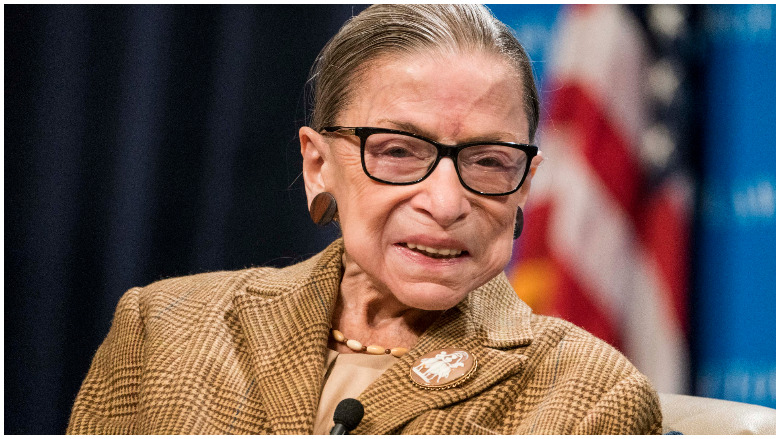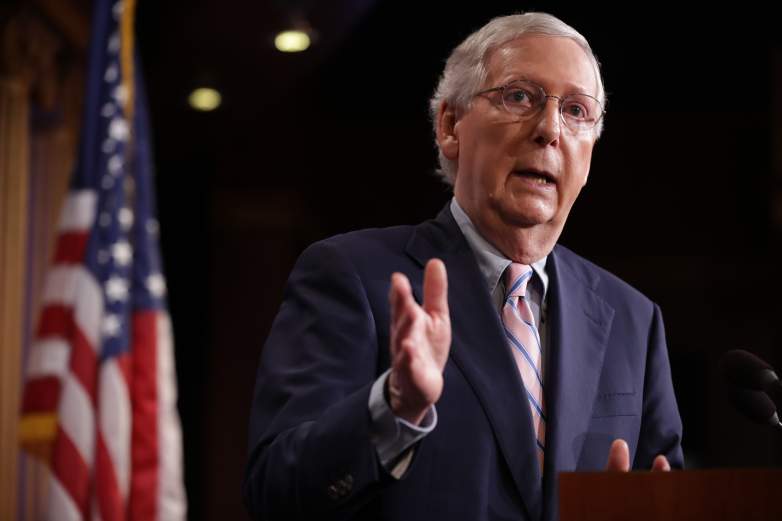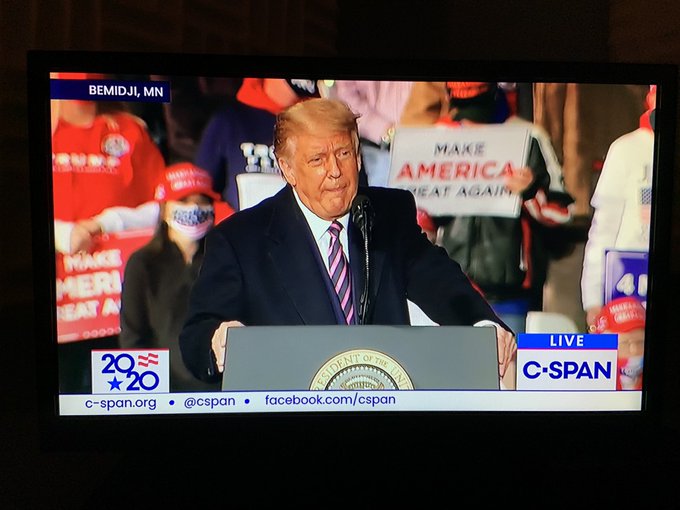
Getty What is Ruth Bader Ginsburg's cause of death?
Does President Donald Trump have time to nominate a Ruth Bader Ginsburg replacement before the election? The answer is yes, but it’s going to be a very tight schedule.
Ginsburg, the feminist icon who became a liberal stalwart on the U.S. Supreme Court, has died at the age of 87. According to NPR, Ginsburg died of “complications from metastatic cancer of the pancreas.”
Trump caught up with the news about Ginsburg after a rally in Minnesota, when he said, according to C-Span, “She just died? Wow. I didn’t know that. You’re telling me now for the first time. She led an amazing life. What else can you say? She was an amazing woman. Whether you agreed or not. She was an amazing woman who led an amazing life. I am sad to hear that.”
Here’s what you need to know about the process for nominating a U.S. Supreme Court Justice:
The Senate Judiciary Committee Will Hold a Hearing & the Nomination Is Voted on by the Full Senate
Republicans will need 51 votes out of 53 Republican Senators (or a 50-50 tie because Vice President Mike Pence would then break the tie) to get Trump’s nominee through. You can find a list of U.S. Senators here. The election is 46 days away.
According to Georgetown Law, this is the process for nominating a Supreme Court Justice:
The President usually will consult with Senators before announcing a nomination.
When the President nominates a candidate, the nomination is sent to the Senate Judiciary Committee for consideration.
The Senate Judiciary Committee holds a hearing on the nominee. The Committee usually takes a month to collect and receive all necessary records, from the FBI and other sources, about the nominee and for the nominee to be prepared for the hearings.
During the hearings, witnesses, both supporting and opposing the nomination, present their views. Senators question the nominee on his or her qualifications, judgment, and philosophy.
The Judiciary Committee then votes on the nomination and sends its recommendation (that it be confirmed, that it be rejected, or with no recommendation) to the full Senate.
The full Senate debates the nomination.
The Senate rules used to allow unlimited debate (a practice known as filibustering) and to end the debate, it required the votes of 3/5 of the Senate or 60 senators (known as the cloture vote). In April 2017, the Senate changed this rule and lowered the required votes to 51 to end debate on Supreme Court nominations (this is commonly known as “the nuclear option”).
When the debate ends, the Senate votes on the nomination. A simple majority of the Senators present and voting is required for the judicial nominee to be confirmed. If there is a tie, the Vice President who also presides over the Senate casts the deciding vote.
Senator Lisa Murkowski, a Republican from Alaska, said on September 18 before Ginsburg died that she “would not vote to confirm a Supreme Court nominee. We are 50 some days away from an election.” U.S. Senator Mitt Romney is another Republican whose vote would be uncertain. Susan Collins, a Republican Senator from Maine, has said before that she would not vote to confirm a justice in October because of the proximity to the election. Another wild card is Senator Chuck Grassley. CNBC reported that he has “expressed opposition to filling a 2020 vacancy” in the past.
Trump Mentioned the Supreme Court During His Minnesota Rally
You can watch the president’s rally above. “Watching this Trump rally in Bemidji, MN is trippy. Everyone knows Ruth Bader Ginsburg has died except, apparently, the most powerful man in the world,” NPR correspondent Jeff Brady wrote.
During the rally, Trump spoke about many other topics, including the New York Times’ Pulitzer Prizes. He did bring up the Supreme Court, still apparently unaware of Ginsburg’s death.
“The next president will get 1, 2 3 or 4 Supreme Court justices,” Trump said at the live rally. “Many presidents have had none…they tend to be appointed young… the next one will have anywhere from one to four. Will totally change when you talk about life, second amendment… this is going to be the most important election in my opinion in the history of our country.”
Trump also touted Senator Ted Cruz as a possible Supreme Court pick.
“Our nation has lost a justice of historic stature,” Chief Justice John Roberts said of Ginsburg, according to NPR, confirming RBG’s death. “We at the Supreme Court have lost a cherished colleague. Today we mourn but with confidence that future generations will remember Ruth Bader Ginsburg as we knew her, a tireless and resolute champion of justice.”
The Senate Majority Leader Promised That Ginsburg’s Replacement Will Get a Vote on the Senate Floor

GettySenate Majority Leader Mitch McConnell (R-KY).
Republican Majority Leader Mitch McConnell said that Ginsburg led an “extraordinary American life.”
He said, “President Trump’s nominee will receive a vote on the floor of the United States Senate.” He added:
In the last midterm election before Justice Scalia’s death in 2016, Americans elected a Republican Senate majority because we pledged to check and balance the last days of a lame-duck president’s second term. We kept our promise. Since the 1880s, no Senate has confirmed an opposite-party president’s Supreme Court nominee in a presidential election year. By contrast, Americans reelected our majority in 2016 and expanded it in 2018 because we pledged to work with President Trump and support his agenda, particularly his outstanding appointments to the federal judiciary. Once again, we will keep our promise.
The replacement would be Trump’s third nomination to the nation’s highest court. Neil Gorsuch and Brett Kavanaugh were his previous picks for the court. Both are currently sitting on the court, Kavanaugh after a particularly ugly nomination fight.
READ NEXT: Aaron Danielson aka ‘Jay Bishop’: Portland Shooting Victim Named

